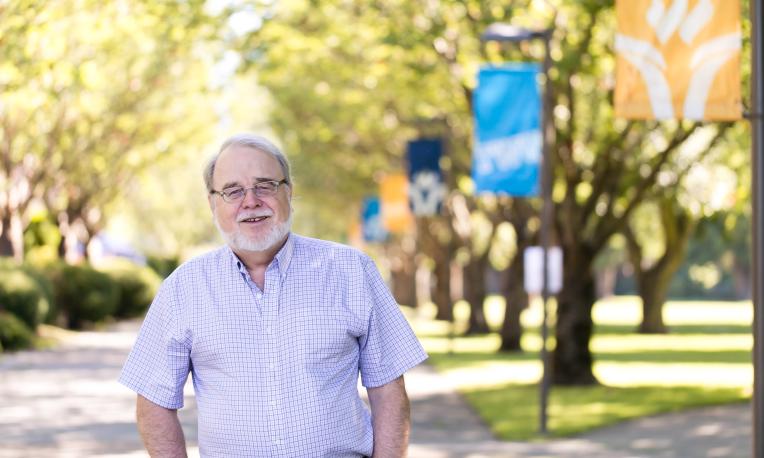
When you wrestle with your faith, writing a book about encounters with Jesus may not seem like the obvious thing to do.
Yet it was that very struggle—which began some 40 years ago—that ultimately led long-time TWU Professor of Philosophy Phillip Wiebe, Ph.D., to embark on the research that formed the basis of his first book, Visions of Jesus. Published in 1997 by Oxford University Press, Visions of Jesus established Wiebe as an expert in the field of Christian religious experience.
“There is a pervasive human hunger to know the truth about the unseen world,” said Wiebe, who has taught at TWU since 1978. “People can ignore it for 30, 40, 50 years, but if it’s been awakened at all in childhood, it will come back at some time.”
That certainly was the case for Wiebe, who was brought up Christian but rejected the Christian faith as a university student. Gradually, his mind began to change as he met people who claimed to have had encounters with Jesus. Then in 1988, he had one of his own.
One morning as he prayed in his office, Wiebe felt overwhelmed by a deep feeling of joy, which lasted for several hours. “I kept asking the Lord, ‘What is this? Why are you so close?’” Wiebe said. “Then a voice came to me: ‘Why don’t you research people who feel they have encountered Me?’”
In his latest book, Visions and Appearances of Jesus (Leafwood Publishers, 2014), Wiebe examines that claim that Jesus has seemingly appeared to people in every century. His research involved appearances, visions, dreams, and trances ranging from the New Testament times, to ancient and medieval times, to the modern age. For his latest book, he interviewed 30 people who had experienced these unique phenomena in their own lives.
“Religious experience can penetrate the larger world,” Wiebe said. “That shows us that there really is another world, another order of reality. It’s a very curious and strange order of reality, to which God, including the resurrected Christ, belongs. These encounters are predominantly one-on-one and highly personal.”
In addition to his research on religious experiences, Wiebe has done considerable research on the Shroud of Turin, believed by many to be the burial cloth of Christ. Wiebe first became a believer in its authenticity in 2000, when he had an epiphany while viewing the Shroud in Turin Cathedral in Northern Italy.
“There are so many features about it that look as if it might be from Israel, and that it might be the Lord,” he said. “The Shroud suggests that someone walked through the cloth and left a kind of imprint of the body.”
At the heart of the Christian faith is this monumental event—the resurrection—that no one witnessed. But Wiebe, through his journey of scholarship and discovery, has come to believe the Shroud to be that of the risen Christ. “The appearances help us interpret and help corroborate the New Testament accounts,” he said, “and the Shroud answers the problem of having no corpse; it disappeared.”

